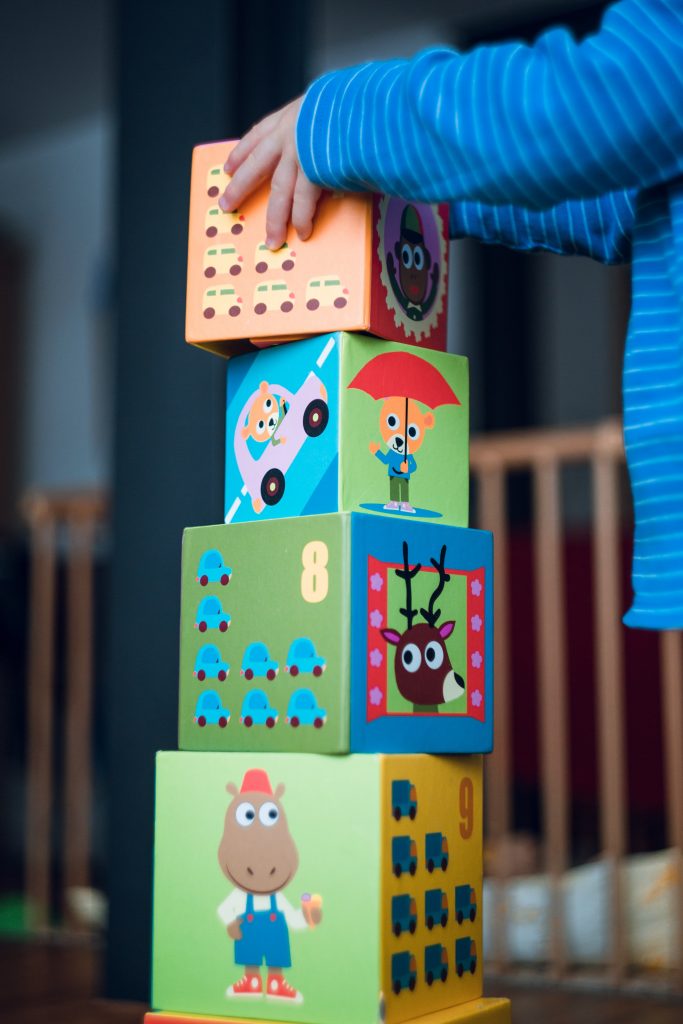Imagine a world where learning and play intertwine seamlessly, where children explore and discover the wonders of science, technology, engineering, and math while engaging in their favorite pastime. Well, my friend, this is not just a distant dream, but a reality that can be brought to life through the power of play. In this article, we will explore the fascinating realm of STEM education, examining how children can acquire knowledge and skills in these subjects while immersing themselves in the joy of play.
From building towering structures with colorful blocks to unraveling the mysteries of coding through interactive games, the potential for learning through play knows no bounds. We will delve into the exciting world of STEM toys, examining which specific disciplines can be explored through these captivating playthings. Whether it’s fostering critical thinking skills, nurturing problem-solving abilities, or igniting a passion for innovation, STEM toys have the power to shape young minds and plant the seeds of curiosity that will blossom into a lifelong love for these academic fields.
So, fasten your seatbelts, my friend, as we embark on a joyous adventure into the realm of “Exploring STEM through Play.” Together, we will uncover the hidden treasures these toys hold, and witness firsthand the endless possibilities that playtime can offer in cultivating a generation of young scientists, engineers, and mathematicians. Let the journey begin!
Benefits of STEM-focused play
STEM-focused play offers numerous benefits for children, ranging from enhancing problem-solving skills to fostering creativity and innovation. By engaging in STEM activities, children develop important skills that are necessary for success in the modern world.
Enhancing problem-solving skills
STEM-focused play encourages children to think critically and solve problems through hands-on experimentation. Whether it’s building a structure with engineering sets or solving coding challenges, children are prompted to consider different approaches and strategies to overcome obstacles. This process of trial and error enables them to develop resilience and perseverance, essential qualities for problem-solving.
Developing critical thinking abilities
STEM toys and activities require children to think analytically and evaluate information. They learn to question, reason, and draw logical conclusions. For example, when engaging in experiments with chemistry kits, children must carefully observe and analyze the results. This promotes critical thinking skills as they strive to understand the underlying scientific principles.
Fostering creativity and innovation
STEM play empowers children to explore their imaginations and think outside the box. Building structures with engineering sets or designing and building bridges with construction materials allow children to express their creativity. By encouraging innovation, STEM-focused play nurtures a mindset that embraces experimentation and problem-solving.
Hands-on learning through play
Toys and activities that incorporate hands-on learning are particularly effective in promoting STEM education. Children not only gain knowledge but also develop practical skills through active engagement with these educational tools.
Experimenting with coding toys
Coding toys provide an excellent introduction to computational thinking and coding concepts. By experimenting with block-based coding games, children can create simple programs and see immediate results. This hands-on approach builds a solid foundation for understanding more complex coding principles in the future.
Building structures with engineering sets
Engineering sets, such as building blocks or construction kits, enable children to design and build their own structures. As they manipulate different pieces to create stable formations, children learn about balance, stability, and structural integrity. This hands-on approach to engineering principles lays the groundwork for future involvement in fields like architecture and civil engineering.
Exploring scientific concepts with chemistry kits
Chemistry kits offer children an opportunity to explore the world of science through hands-on experiments. By conducting simple chemical reactions and observing the outcomes, children gain a deeper understanding of concepts such as chemical properties, reactions, and safety procedures. These practical experiences not only spark curiosity but also lay the foundation for further scientific inquiry.

Promoting math skills
STEM play can significantly enhance children’s math skills through interactive and engaging activities that focus on various mathematical concepts.
Counting and sorting activities
Counting and sorting activities, such as using manipulatives or puzzles, help children develop their number sense and basic math skills. By physically manipulating objects, they gain a better understanding of numerical relationships and patterns. This hands-on approach makes math more tangible and enjoyable for young learners.
Geometry and spatial awareness
Toys and games that involve building structures or shapes can boost children’s understanding of geometry and spatial awareness. By manipulating objects and arranging them into different configurations, children develop an intuitive understanding of geometric shapes and their properties. This knowledge lays a strong foundation for more advanced mathematical concepts later on.
Using measurement tools
STEM-focused toys often incorporate measurement tools, introducing children to the practical aspects of measurement and estimation. Whether it’s using scales to weigh objects or rulers to measure lengths, these activities offer a hands-on approach to understanding the importance of accurate measurements. Developing an understanding of measurement concepts early on sets the stage for future mathematical proficiency.
Introduction to coding
As digital literacy becomes increasingly important in today’s world, introducing children to coding at an early age is crucial. STEM-focused play provides a fun and engaging environment for children to explore coding concepts.
Block-based coding games
Block-based coding games use visual blocks to represent code, making it accessible and intuitive for young learners. Through these games, children can practice sequencing, patterns, and problem-solving, all while gaining a basic understanding of coding principles. By arranging the blocks in the correct sequence, they can control characters or objects in a virtual environment, honing their logical thinking and creativity.
Robotics and programming toys
Robotic toys enable children to engage in hands-on coding experiences by controlling the movement and actions of robots. By learning how to program robots, children explore concepts such as algorithms, loops, and conditionals. They develop skills like computational thinking and logical reasoning as they navigate through coding challenges, fostering problem-solving abilities in a fun and interactive way.
Understanding algorithms and sequences
STEM-focused play introduces children to the concept of algorithms, which are step-by-step instructions for solving problems. Through coding games and activities, children learn to break down tasks into smaller parts and arrange them in a logical sequence. This understanding of algorithms prepares them for future coding endeavors and helps develop their logical thinking skills.

Encouraging scientific exploration
STEM-focused play has the power to ignite curiosity about the world and foster a lifelong love for scientific inquiry. By engaging in hands-on activities and experiments, children can explore various scientific concepts with enthusiasm.
Learning about the human body through anatomy toys
Anatomy toys allow children to explore the intricacies of the human body. By dissecting models or examining organs and bones, children gain a valuable understanding of the human anatomy. This firsthand exploration helps them develop an appreciation for the complexity of the human body and may even inspire future medical professionals or scientists.
Studying the natural world with microscope kits
Microscope kits provide children with the opportunity to observe and analyze the microscopic world around them. By examining samples under a microscope, they can study cells, microorganisms, and other fascinating natural phenomena. This hands-on exploration encourages scientific curiosity and helps children develop an understanding of scientific investigation.
Understanding physics principles with simple machines
STEM toys that focus on simple machines, such as pulleys or levers, introduce children to basic physics principles. By building and experimenting with these machines, children can gain insights into concepts like force, motion, and mechanical advantage. This hands-on exploration of physics concepts lays a foundation for understanding more complex scientific phenomena in the future.
Teaching engineering concepts
STEM-focused play provides an excellent platform for introducing children to engineering concepts and principles. By engaging in hands-on activities, children can develop a solid understanding of engineering principles and their real-world applications.
Constructing with building blocks
Building blocks are a classic STEM toy that promotes engineering skills. By constructing various structures, children learn about balance, stability, and design. They can experiment with different materials, shapes, and sizes, discovering firsthand how these factors impact the stability and integrity of their creations. This hands-on exploration of engineering principles fosters creativity and problem-solving abilities.
Designing and building bridges
Engineering sets that specifically focus on bridge building offer children an opportunity to explore the fundamental principles of structural engineering. By designing and building their own bridges, children learn about concepts such as load distribution, tension, and compression. They develop spatial reasoning and critical thinking skills as they construct bridges that can withstand different forces. This hands-on approach to engineering concepts encourages creativity and innovation.
Exploring architectural principles through model kits
Model kits allow children to engage in designing and constructing buildings, introducing them to architectural principles. By following blueprints or creating their own designs, children learn about proportion, scale, and spatial relationships. They gain insights into the balance between aesthetics and functionality, fostering an appreciation for architecture and design. This hands-on exploration of architectural concepts nurtures creativity and problem-solving abilities.

Applying technology skills
STEM-focused play enables children to develop crucial technology skills through hands-on exploration of different technological tools and concepts.
Creating circuits with electronic kits
Electronic kits provide children with an opportunity to learn about circuits and electrical components. By building their own circuits and seeing how they function, children gain an understanding of conductivity, resistance, and the flow of electricity. This hands-on experimentation instills technological literacy and fosters an interest in electronics and engineering.
Understanding robotics and automation
Robotics toys introduce children to the world of automation and artificial intelligence. By building and programming robots, children learn how to control machines and explore the endless possibilities of robotics. This hands-on engagement helps them develop an understanding of basic engineering principles, programming concepts, and the potential of technology in our everyday lives.
Exploring 3D modeling and printing
STEM play can also involve exploring 3D modeling and printing. By designing their own 3D models using software or manipulating existing designs, children gain a practical understanding of spatial relationships and geometry. Printing these models using a 3D printer allows them to witness their creations come to life, fostering a sense of accomplishment and creativity.
Strengthening problem-solving abilities
STEM-focused play provides ample opportunities for children to strengthen their problem-solving abilities through engaging activities and games.
Solving puzzles and brainteasers
STEM-focused puzzles and brainteasers challenge children to think critically and apply problem-solving strategies. Whether it’s solving a Rubik’s cube or completing a maze, these activities encourage logical reasoning, spatial awareness, and perseverance. By tackling puzzles, children develop skills like pattern recognition, planning, and patience.
Engaging in logical reasoning games
Logical reasoning games, such as Sudoku or logic puzzles, provide children with opportunities to apply their analytical skills and solve problems systematically. They learn to deduce, analyze, and make logical connections. By engaging in these games, children hone their critical thinking abilities and develop strategies for solving complex problems.
Developing strategies through board games
Board games can be an excellent way to strengthen problem-solving abilities while promoting social interaction. Strategy-based board games require children to think ahead, consider different scenarios, and make decisions based on limited information. By engaging in these games, children develop strategic thinking, decision-making, and the ability to adapt to changing circumstances.
Developing teamwork and collaboration
STEM-focused play not only promotes individual skills and development but also enables children to learn and collaborate effectively with others.
Participating in science experiments with peers
STEM experiments and activities, when carried out with peers, promote teamwork and collaboration. By working together to design experiments, gather data, and analyze results, children learn the value of cooperation and shared responsibility. They develop communication skills, respect for others’ ideas, and the ability to work as a team.
Engaging in engineering challenges with friends
Engineering challenges that involve designing and building structures can be done collaboratively with friends. By combining their ideas, skills, and resources, children learn how to collaborate effectively towards a common goal. They develop problem-solving strategies, negotiate compromises, and appreciate the strengths of their team members. These collaborative experiences foster teamwork and enhance communication and leadership skills.
Playing cooperative coding games
Cooperative coding games require children to work together to solve coding challenges as a team. By dividing tasks, communicating ideas, and coordinating their efforts, children learn to collaborate and leverage each other’s strengths. This cooperative approach to coding promotes effective teamwork and helps children develop an understanding of the power of collaboration.
Conclusion: The power of STEM-focused play
STEM-focused play offers numerous benefits for children, preparing them for future careers, nurturing a passion for lifelong learning, and creating well-rounded individuals. By engaging in STEM activities, children enhance problem-solving skills, develop critical thinking abilities, and foster creativity and innovation.
Through hands-on learning, children experiment with coding toys, build structures with engineering sets, and explore scientific concepts with chemistry kits. These activities promote math skills by engaging in counting and sorting activities, developing geometry and spatial awareness, and using measurement tools.
Introduction to coding through block-based coding games, robotics, and programming toys enables children to understand algorithms, sequencing, and computational thinking. Scientific exploration is encouraged through anatomy toys, microscope kits, and understanding physics principles with simple machines.
Teaching engineering concepts involves constructing with building blocks, designing and building bridges, and exploring architectural principles through model kits. Application of technology skills includes creating circuits with electronic kits, understanding robotics and automation, and exploring 3D modeling and printing.
STEM-focused play strengthens problem-solving abilities through solving puzzles and brainteasers, engaging in logical reasoning games, and developing strategies through board games. Additionally, it promotes teamwork and collaboration by participating in science experiments with peers, engaging in engineering challenges with friends, and playing cooperative coding games.
By embracing the power of STEM-focused play, children are equipped with essential skills and knowledge for future success, while fostering a curiosity for lifelong learning. This holistic approach creates well-rounded individuals who are prepared for the challenges of an increasingly STEM-driven world.

